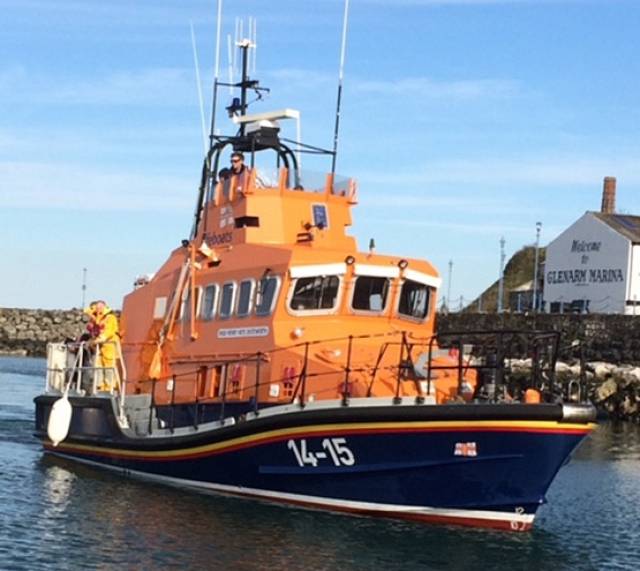An all-weather lifeboat has officially been put on service and become a declared search and rescue asset for a two year trial period at Red Bay RNLI in County Antrim.
The Trent class lifeboat Henry Heys Duckworth has come from the existing RNLI fleet and will now operate alongside the station’s existing inshore lifeboat.
Prior to its arrival in Cushendall, the lifeboat was moored at Glenarm Marina for a short period to facilitate the completion of shore works at Red Bay.
Today’s fully operational status for the all-weather lifeboat follows an intensive period of training for the station’s volunteer crew members.
The Henry Heys Duckworth was first launched in 1996 and since then has launched 200 times and rescued 217 people.
The decision to place an additional all-weather lifeboat on the North Antrim coast follows an in-depth review by the RNLI, of lifeboat cover in Northern Ireland.
Since the announcement last May there has been a concentrated period of preparation for the lifeboat crew, which has included months of training and visits to the RNLI College in Poole.
There are currently five coxswains, four mechanics, four navigators and a group of all-weather lifeboat crew members trained and ready to respond to call outs aboard the Henry Heys Duckworth.
Last year, Red Bay RNLI launched 20 times and brought 18 people to safety. Of those launches, 11 services were in the dark. In all, some 160 service hours were spent at sea.
Speaking as the lifeboat officially went on service this morning, Andrew McAlister, Red Bay RNLI Lifeboat Operations Manager said there was great excitement within the Cushendall community: ‘This is a proud day for everyone involved with Red Bay RNLI. The new lifeboat will allow us to provide lifesaving cover in all weathers and in challenging conditions up to 100 miles off the North Antrim coastline. To see this group of volunteers coming together and training with the all-weather lifeboat in recent months was wonderful and we are now fully prepared and equipped with the necessary training and skills to respond operationally alongside our inshore lifeboat.’
Developed by the RNLI in the early 1990s, the Trent class lifeboat is designed to lie afloat and is inherently self-righting. At sea, it is crewed by six all-weather lifeboat volunteers. It is capable of 25 knots and can carry up to 73 survivors.
The Trent carries an XP boat, an inflatable daughter boat with a 5hp outboard engine capable of six knots. She is used to access areas where the lifeboat cannot reach.
The comprehensive electronics include VHF and MF radios with DSC functionality, VHF direction finder, DGPS with electronic chart system and radar. Comprehensive first aid equipment includes stretchers, oxygen and entonox. Other equipment includes a portable salvage pump carried in a watertight container.































































